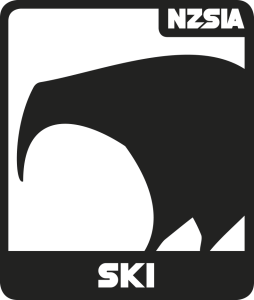Intro to Freeride
 What, Why, How
What, Why, How
What
Freeride skiing is the ability to take good situational skiing skills and apply them in a way to ski a ‘line’ that is fluid, controlled, technically accurate, adding in your own style while hitting airs such as cliffs or wind lips.
Why
Freeride skiing is a fun and challenging way to take skiing skills into difficult and exposed terrain. It teaches our students how to trust their skills and make quick, instinctive movements. This will lead to a huge amount of inbounds and out of bounds terrain being accessible to your students in the future.
How
Firstly, your students will need to be comfortable skiing in off-piste situations across the mountain. Start small where they are confident and then progress from there. You will also need to develop the students’ ability to jump and quickly compose themselves to control speed. This can be practised firstly on park jumps or small side hits around the resort. Once they can land and control their speed, start moving towards using features in steep terrain such as rollovers or small cliffs to get airborne. ATTL applies in this situation (read: Intro to Park). From here your students can start to link natural features together to make a line down a face/slope. When developing the skills to scope a line, start at the bottom of the hill and pick out a starting point, a finishing point and some features to hit in between. Now ski the slope slowly and get your students to ski from feature to feature looking for landmarks that they spotted from the bottom of the hill. When they are confident in their line and landmarks get them to ski the line as a complete run.

 Technical Know-how
Technical Know-how
Skills
Students must have a solid understanding of good ski technique to then apply it in all situations they might encounter in freeride terrain e.g. Steeps, bumps, ice, powder, wind blown, tussock etc. As well as this students will learn how to read terrain. This means looking at a slope from the bottom and picking a line down the face that is safe but challenging with airs that are appropriate.
Ski Snow Interaction
It is important to have a blend of the skills needed for situational skiing to create accurate skiing that is functional in all terrain. This will allow for smooth skiing down the terrain while staying in control in exposed areas.
Turn Phases
In situational terrain your students will need to vary their turn size and shape depending on the situation and desired outcome. Having the ability to do this on-piste and easy off-piste terrain will make this easier to achieve.
 Teaching Tactics
Teaching Tactics
Terrain
When developing these skills we can ski on any off-piste terrain that your students will be comfortable on. Starting off on easier terrain will build confidence before taking these skills to harder and more exposed terrain elsewhere.
Class Handling
When managing classes in this terrain be sure you stop your class in a safe point where they are visible from above and will not get caught up in anything falling down the slope. Also be conscious of the mental stress that is put on your students being in exposed terrain that could be on the edge of their comfort level. This can be taxing mentally and physically which could lead to injury so make sure you are empathetic towards your students and make decisions that will encourage growth and development.

